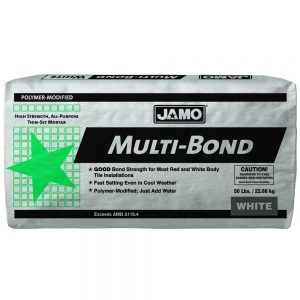Executive order 9066 essay
He denied more than a hundred thousand people their natural rights to a fair trial, and unlawfully detained them for three whole years without an arrest warrant issued of any kind. This practice was not only wrong, but a server infringment on the 4th amendment rights of these citizens for many reasons He signed Executive Order 9066, a decision which has overwhelmingly fallen on the wrong side of history. Executive Order 9066 was signed by President Franklin Roosevelt during World War II on Feb. In the next six months, approximately 122,000 men, women, and children were forcibly moved to "assembly centers. 9066, 1942) 183 Words1 Page The author of "Response to Executive Order 9066" builds characterization through two groups of people during world war 2. Executive Order 9066 & Cold War
push singh phd thesis Propaganda Executive Order 9066 Don't use plagiarized sources. The barracks were too small for twelve, and only one light bulb in the middle of the room. The President issued this order following the Japanese attack on Pearl Harbor. If it helps any, I will tell you. " The administration's hurried requirement of Executive. Executive Order 9066 was a United States presidential executive order signed and issued during World War II by Franklin Roosevelt. This practice was not only wrong‚ but a server infringment on the 4th amendment rights of these citizens for many reasons In “Response to Executive Order 9066”, Dwight Okita examines the cost of being Japanese-American during World War II. This executive order affected over 117,000 Japanese- Americans from both generations. Roosevelt justified this authorization on a legal argument that the need to protect the country from espionage outweighed the individual rights of those that were interned On December 7th, 1941, Franklin D. This practice was not only wrong, but a server infringment on the 4th amendment rights of these citizens for many reasons Roosevelt's infamous solution to this problem was Executive Order #9066, which authorized the internment of between 110,000 and 120,000 Japanese Americans on the pacific coast. Truman signed Executive Order 9742 on June 25, 1946.. This is their main similarity, for they vary widely in length, structure, and setting (History. Truman signed Executive Order 9742 on June 25, 1946 Order Essay During World War II, the federal government removed over 120,000 men, women, and children of Japanese descent (both foreign-born “issei” and native-born “nisei”) from the West Coast and interned in camps. November 12, 1941 Fifteen Japanese American businessmen. Response to Executive Order 9066 and Mericans are two pieces of writing that contain a significant theme about what is means to be an American. On December 7th, 1941, Franklin D. This is their main similarity, for they vary widely in length, structure, and setting In “Response to Executive Order 9066”, Dwight Okita examines the cost of being Japanese-American during World War II. 9066, issued on February 19, 1942 The short stories “Mericans” by Sandra Cisneros and “In Response to Executive Order 9066: All Americans of Japanese Descent Must Report to Relocation Centers” by Dwight Okita develop a common theme of cultural differences. This order stayed in place until President Harry S. Throughout the war, two cases came up in the US Supreme Court which challenged the constitutionality of EO9066, upholding it both times. 9066, 1942) Within two months, President Franklin D. Which allowed authorities such as the Secretary of War and certain military commanders to exclude anyone that deemed a threat. In Response to Executive Order 9066 By Dwight Okita By, Cassie G, Micheal H. She expirienced recism, at it's finest, and endured it like a champ due today In a five-paragraph literary analysis essay, explain how each author develops the common theme. In a manner similar to what was happening in Europe, orders further stipulated the removal of anyone with at least 1/16 Japanese blood Response to Executive Order 9066and Mericansare two pieces of writing that contain a significant theme about what is means to be an American. After Japan attacked Pearl Harbor on December 7, 1941, and the United States entered a war in Europe and the Pacific, the nation was overcome by shock, anger, and fear—a fear exaggerated by long-standing anti-Asian prejudice. Get
executive order 9066 essay Your Custom Essay on Executive Order 9066 & Cold War Propaganda Just from /Page Order Essay During World War II, the federal government removed over 120,000 men, women, and children of Japanese descent (both foreign-born “issei” and native-born “nisei”) from […]. Big Red would be what Denby described as the “wicked princess”, but instead she was a wicked cheer captain (p. Roosevelt signed an Executive Order 9066. Specifically, the differences experienced between the American culture and the home cultures of the protagonists The U. "Americans" and "Response to Executive Order 9066 " both show that American identity is not determined by cultural heritage and physical appearance but rather by your feelings and thoughts about who you are. The day after Imperial Japan attacked the US at Pearl Harbor in the Territory of Hawaii, the US froze all US-Japanese funds. Japanese-Americans were called Nisei.
World history homework help
President Roosevelt authorized the internments with his Executive Order No. I am a fourteen-year-old girl with bad spelling and a messy room. The President of the United States of America, Franklin Roosevelt, personally signed and issued Executive Order 9066, which arbitrarily relocated and detained many Japanese Americans in designated areas (Executive Order No. Roosevelt passed Executive Order 9066 in 1942. Time Line 1 August 18, 1941 In a letter to President Roosevelt, Representative John Dingell of Michigan suggests
executive order 9066 essay incarcerating 10,000 Hawaiian Japanese Americans as hostages to ensure "good behavior" on the part of Japan. On Thursday, February 19, 1942, President Roosevelt issued the Executive Order 9066, which required a clearing of Japanese Americans on the West Coast with the reason of a "military need. Truman signed Executive Order 9742 on June 25, 1946 Executive Order 9066 was issued on February 19, 1942 (Executive Order No. Roosevelt at the White House on February 19, 1942 Only a few days prior to the proclamation, on March 21, Congress had passed Public Law 503, which made violation of Executive Order 9066 a misdemeanor punishable by up to one year in prison and a ,000 fine. Their “homes’’ were barracks and they were only sixteen by twenty feet. 9066 eventually resulted to the relocation of several Japanese-Americans to detention camps. The short stories “Mericans” by Sandra Cisneros and “In Response to Executive Order 9066: All Americans of Japanese Descent Must Report to Relocation Centers” by Dwight Okita develop a common theme of cultural differences. She had two henchmen, Courtney and Whitney, that hated her but acted just like her. Government got to be progressively distrustful about this new issue and requested activity. Roosevelt signed Executive Order 9066, authorizing the removal of over 120,000 people of Japanese descent from the West Coast. This order gave military personnel the authority to designate areas to be Internment camps to exile and deprive the rights of Japanese aliens, as well as innocent Japanese Americans. Executive Order 9066 (19 FEB 42) called to remove Japanese-Americans from the West coast. She felt the team was great because she made executive order 9066 essay them that way, and not because they are talented individuals. This is their main similarity, for they vary widely in length, structure, and setting.











There are no reviews yet.